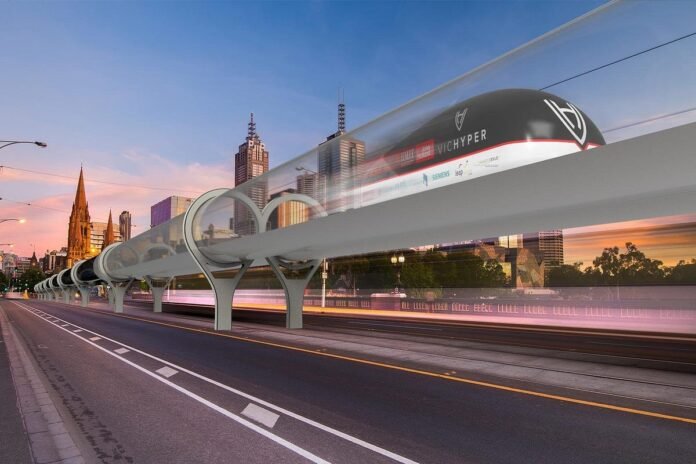As our cities and communities continue to grow, transportation becomes an increasingly complex and pressing issue. Fortunately, there are several promising technologies on the horizon that could help to address some of the most pressing transportation challenges we face. In this article, we will explore the perplexing and bursty future of transportation, examining some of the most exciting developments in the field and the potential impact they could have on society.
The Promise of Flying Cars
For decades, flying cars have been a staple of science fiction, but recent advancements in technology have brought them closer to reality than ever before. Companies like Uber and Boeing are investing heavily in flying car technology, and there are already prototypes in development that could revolutionize the way we think about transportation.
While the potential benefits of flying cars are clear, including reduced traffic congestion, faster travel times, and new transportation routes, there are also significant challenges that must be addressed, such as safety concerns, noise pollution, and air traffic control.
The Hyperloop Revolution
Hyperloops are another promising transportation technology that has the potential to revolutionize the way we move around our cities and beyond. Hyperloops are high-speed transportation systems that use vacuum-sealed tubes to transport passengers and cargo at incredible speeds. Elon Musk’s Hyperloop project is perhaps the most famous example of this technology, but there are many others in development around the world.
The potential benefits of hyperloops include faster travel times, improved environmental sustainability, and reduced traffic congestion. However, significant technical and logistical challenges must be addressed, including developing the infrastructure to support hyperloops, ensuring safety, and addressing regulatory issues.
Self-Driving Cars and the Road Ahead
Self-driving vehicles are yet another exciting transportation technology that has already made significant progress in recent years, with companies like Tesla and Google investing heavily in this field. Self-driving cars have the potential to reduce accidents, improve traffic flow, and provide mobility options for people who are unable to drive.
However, there are also concerns around the safety and security of self-driving vehicles. There have been several high-profile accidents involving self-driving cars, and there are also concerns around the potential for hacking and cyber attacks.
The Future of Transportation
The future of transportation is likely to be a combination of these technologies and others, such as electric vehicles and public transit systems. There are several key trends that are likely to shape the future of transportation, including:
-
Integration of Technology
Technology will continue to play a key role in transportation, with the integration of AI, IoT, and other technologies to create smarter and more efficient transportation systems.
-
Increased Sustainability
Sustainability will be a key focus of the future of transportation, with a shift towards electric vehicles, renewable energy sources, and other environmentally friendly technologies.
-
Shared Mobility
Shared mobility, such as ride-sharing and bike-sharing, will become increasingly common, providing more efficient and cost-effective transportation options.
-
New Modes of Transportation
New modes of transportation, such as flying cars and hyperloops, will continue to emerge and gain traction, providing new options for travel and transportation.
-
Improved Infrastructure
Infrastructure will continue to improve, with new highways, bridges, and transit systems being built to accommodate growing populations and increasing demand for transportation.
Benefits:
-
Reduced Traffic Congestion
The integration of technology, shared mobility, and new modes of transportation could reduce traffic congestion, making travel faster and more efficient.
-
Improved Sustainability
The shift towards electric vehicles and other environmentally friendly technologies could help to reduce greenhouse gas emissions and improve air quality.
-
Increased Safety
Self-driving vehicles and other safety technologies could help to reduce accidents and improve road safety.
-
Increased Mobility
New modes of transportation, such as flying cars and hyperloops, could provide new mobility options for people who live in areas with limited access to transportation, opening up new opportunities for work, education, and recreation.
-
Economic Benefits
New transportation technologies could provide economic benefits, creating new jobs and driving innovation and growth in related industries.
Challenges:
-
Infrastructure Requirements
Many future transportation technologies require significant infrastructure investments, which could be difficult to finance and implement.
-
Safety Concerns
Safety concerns are a major challenge for many future transportation technologies, particularly those that involve flying cars or hyperloops.
-
Regulatory Issues
There are significant regulatory issues that must be addressed for many future transportation technologies, including issues around safety, privacy, and security.
-
Equity and Access
There is a risk that new transportation technologies could exacerbate existing inequalities, particularly if they are only accessible to the wealthy or to people who live in certain areas.
-
Public Acceptance
Finally, public acceptance is a significant challenge for many future transportation technologies. People may be resistant to new modes of transportation, particularly if they are unfamiliar or perceived as unsafe.
Conclusion
The future of transportation is full of promise and possibility, but also significant challenges that must be addressed. By embracing new technologies and approaches to transportation, we can create a system that is faster, safer, more efficient, and more sustainable, improving the quality of life for people around the world.
However, it is important that we approach the development and deployment of these technologies with caution, ensuring that they are developed in a responsible and ethical way, and that they are accessible to everyone. By doing so, we can create a transportation system that benefits everyone, not just a select few. The future of transportation is in our hands, and we have the power to shape it in a way that benefits us all.
Google News | Telegram
















